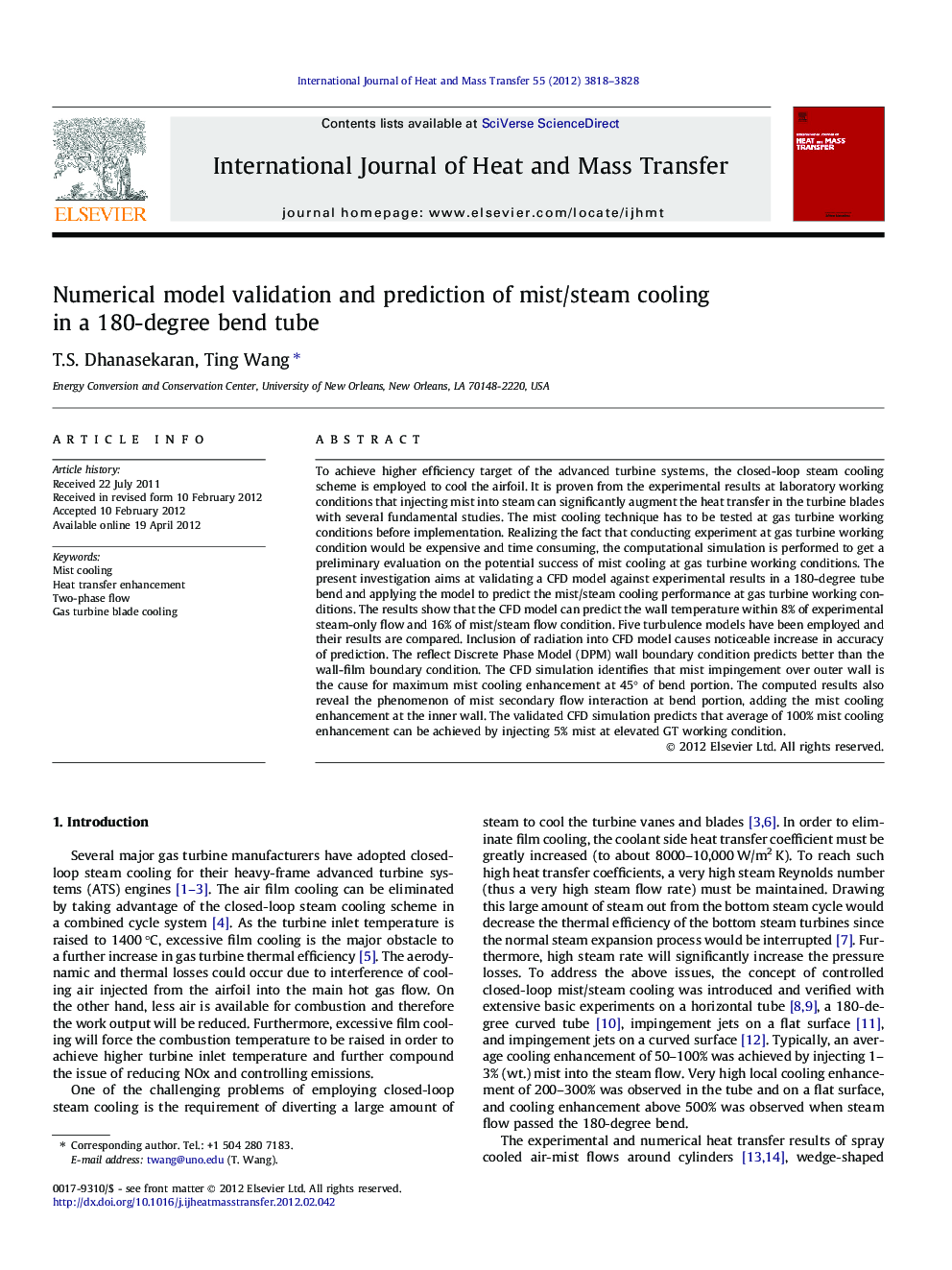| کد مقاله | کد نشریه | سال انتشار | مقاله انگلیسی | نسخه تمام متن |
|---|---|---|---|---|
| 658406 | 1458094 | 2012 | 11 صفحه PDF | دانلود رایگان |
عنوان انگلیسی مقاله ISI
Numerical model validation and prediction of mist/steam cooling in a 180-degree bend tube
دانلود مقاله + سفارش ترجمه
دانلود مقاله ISI انگلیسی
رایگان برای ایرانیان
کلمات کلیدی
موضوعات مرتبط
مهندسی و علوم پایه
مهندسی شیمی
جریان سیال و فرایندهای انتقال
پیش نمایش صفحه اول مقاله

چکیده انگلیسی
To achieve higher efficiency target of the advanced turbine systems, the closed-loop steam cooling scheme is employed to cool the airfoil. It is proven from the experimental results at laboratory working conditions that injecting mist into steam can significantly augment the heat transfer in the turbine blades with several fundamental studies. The mist cooling technique has to be tested at gas turbine working conditions before implementation. Realizing the fact that conducting experiment at gas turbine working condition would be expensive and time consuming, the computational simulation is performed to get a preliminary evaluation on the potential success of mist cooling at gas turbine working conditions. The present investigation aims at validating a CFD model against experimental results in a 180-degree tube bend and applying the model to predict the mist/steam cooling performance at gas turbine working conditions. The results show that the CFD model can predict the wall temperature within 8% of experimental steam-only flow and 16% of mist/steam flow condition. Five turbulence models have been employed and their results are compared. Inclusion of radiation into CFD model causes noticeable increase in accuracy of prediction. The reflect Discrete Phase Model (DPM) wall boundary condition predicts better than the wall-film boundary condition. The CFD simulation identifies that mist impingement over outer wall is the cause for maximum mist cooling enhancement at 45° of bend portion. The computed results also reveal the phenomenon of mist secondary flow interaction at bend portion, adding the mist cooling enhancement at the inner wall. The validated CFD simulation predicts that average of 100% mist cooling enhancement can be achieved by injecting 5% mist at elevated GT working condition.
ناشر
Database: Elsevier - ScienceDirect (ساینس دایرکت)
Journal: International Journal of Heat and Mass Transfer - Volume 55, Issues 13â14, June 2012, Pages 3818-3828
Journal: International Journal of Heat and Mass Transfer - Volume 55, Issues 13â14, June 2012, Pages 3818-3828
نویسندگان
T.S. Dhanasekaran, Ting Wang,